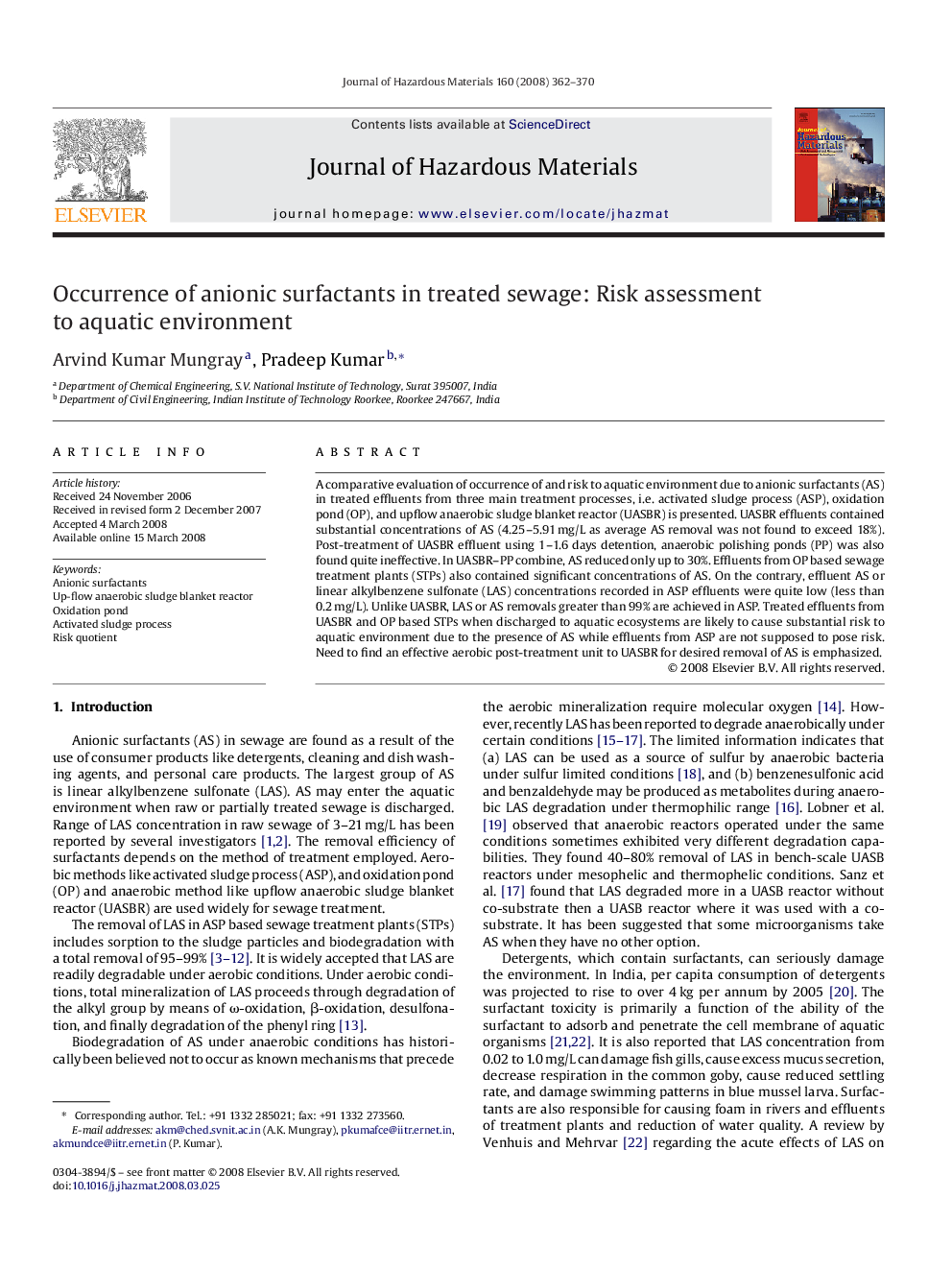| Article ID | Journal | Published Year | Pages | File Type |
|---|---|---|---|---|
| 582726 | Journal of Hazardous Materials | 2008 | 9 Pages |
Abstract
A comparative evaluation of occurrence of and risk to aquatic environment due to anionic surfactants (AS) in treated effluents from three main treatment processes, i.e. activated sludge process (ASP), oxidation pond (OP), and upflow anaerobic sludge blanket reactor (UASBR) is presented. UASBR effluents contained substantial concentrations of AS (4.25-5.91Â mg/L as average AS removal was not found to exceed 18%). Post-treatment of UASBR effluent using 1-1.6 days detention, anaerobic polishing ponds (PP) was also found quite ineffective. In UASBR-PP combine, AS reduced only up to 30%. Effluents from OP based sewage treatment plants (STPs) also contained significant concentrations of AS. On the contrary, effluent AS or linear alkylbenzene sulfonate (LAS) concentrations recorded in ASP effluents were quite low (less than 0.2Â mg/L). Unlike UASBR, LAS or AS removals greater than 99% are achieved in ASP. Treated effluents from UASBR and OP based STPs when discharged to aquatic ecosystems are likely to cause substantial risk to aquatic environment due to the presence of AS while effluents from ASP are not supposed to pose risk. Need to find an effective aerobic post-treatment unit to UASBR for desired removal of AS is emphasized.
Keywords
Related Topics
Physical Sciences and Engineering
Chemical Engineering
Chemical Health and Safety
Authors
Arvind Kumar Mungray, Pradeep Kumar,
